Bike racks provide a convenient and secure place to park bicycles in public areas. From simple bike stands to larger capacity racks, they serve an important role in many locations. Proper maintenance keeps bike racks functioning safely and extending their usable lifespan. This article will provide tips for keeping common bike rack types in optimal working order.
The Importance of Bike Rack Maintenance
Keeping up with standard bike rack maintenance benefits the property owner and bicyclists alike in a few key ways:
Security
Damaged or unreliable racks fail to support parked bikes properly, leading to fallen cycles that can block pathways and damage vehicles. This also creates theft opportunities, as bikes on the ground are easier targets for criminals to grab and flee the scene quickly. Periodic inspection and general upkeep preserve the structural integrity of the bike rack, ensuring bicycles remain properly locked in place without risk of suddenly collapsing.
Protection
The metal and other materials that make up an outdoor bike rack face damage from exposure to weather conditions such as rain, snow, sunlight, pollution, road salts, and other elements. Over time, these can lead to corrosion, rust, peeling paint, and cosmetic issues. But with regular washings to remove grime buildup and touch-up paint jobs to cover any new scratches or corrosion spots, the outdoor bike rack stays protected and weather-resistant for longer. This preventative maintenance saves thousands over the coming years by avoiding expensive repainting or part replacements down the road.
Lifespan
With periodic inspections, adjustments, and minor fixes, properly maintained outdoor bike racks continue functioning for up to twice their average lifespan before needing a full replacement. Rather than surviving 5-10 years under normal outdoor conditions, the same rack could last 10-20 years given regular basic maintenance. This keeps replacement costs down dramatically over the long term.
Inspecting & Cleaning Bike Racks
About twice per year, thoroughly inspect and clean bike racks to reveal any issues.
Inspection
Conducting periodic inspections of bike racks is crucial for identifying issues before they pose safety hazards or lead to costly repairs. When examining racks, look over all structural components closely for signs of:
- Rust - Check joints, crevices, and ends of tubular frames where water can collect and cause corrosion. Rust indicates the metal protective coating has been compromised, and further damage is likely to occur without intervention.
- Cracks/dents - Inspect welds, lines, and joints for any cracking that may compromise frame integrity. Check tubes and solid rods for major dents as well that could warp rack parts over time.
- Sharp protrusions - Examine all connection points, ends of tubing, and edges of rack components for any burrs or sharp edges that could pose puncture/laceration hazards to people brushing against them.
- Loose anchoring - Try jiggling rack legs and frame components to check for looseness at anchoring points into the ground or wall mount. Any noticeable movement indicates loose bolts/fasteners.
Additionally, inspect all mounting hardware, including:
- Tightness of bolts - Use a wrench to manually test the tightness of exposed bolts, particularly at joints, seams, and base connection points most susceptible to loosening over time.
- Missing or damaged pieces - Check that no hardware pieces are bent, broken, or missing. Missing bolts at connection points can severely undermine rack stability. Contact the original manufacturer for spare parts.
Cleaning
While inspecting racks, use a stiff bristle brush and all-purpose biodegradable cleaner to scrub down areas with buildup of:
- Dirt - Brush and rinse mud, embedded gravel, plant matter, and other grime
- Debris - Remove any trash, cups, papers, or other items jammed into racks
- Salt residue - Clean off the white/grey residue left behind by de-icing salts
After scrubbing racks, rinse thoroughly with a high-pressure nozzle. Allow racks to completely air dry before applying any lubricants or protective coatings that require a fully dried surface.
When conducting bike rack maintenance, check that all moving parts like hinges, locks, and adjustable arms slide and function smoothly. If needed, use a Teflon-based lubricant on the mechanisms to reduce friction.
Finally, replace any bike rack signage where instructions, warnings, or codes have become worn or illegible over time. Clear information ensures proper rack usage while making a positive visual impact.
Protecting Bike Racks from Weather Conditions
The effects of sun, rain, snow, and other elements degrade outdoor bike racks over time. But some simple protection measures go a long way:
Touch Up Paint
Use exterior-grade enamel paint to cover any new rust spots or scratches. Match the original bike rack color whenever possible.
Metal Protectant
Apply a weatherproof sealant once or twice per year to metal surfaces. Avoid painted sections.
Ensure Water Drainage
For outdoor racks, verify water freely drains from hollow frames to prevent interior corrosion.
Adjustments and Minor Bike Rack Repairs
Many issues can be fixed with basic tools and bike rack components:
Re-Tightening and Re-Alignment
Use proper-sized wrenches to tighten loose anchoring points or other bolted joints. Tap small racks back into proper alignment with a mallet. Or detach and re-install crooked sections.
Replacement Hardware
Replace stripped, broken, or missing bolts, nuts, screws, or other parts with the proper grade hardware. As an alternative to replacing severely damaged racks, some facilities choose to retrofit old bike racks by having specialty contractors cut away severely degraded sections of tubing and weld in new rack pieces to match the original footprint.
Handy Maintenance Materials
Keep these supplies onsite for basic bike rack upkeep projects:
- Exterior paint in original colors
- Metal protector spray
- Waterproof grease
- Replacement hardware
- Rust remover
- Touch-up paint kits
- Paintbrushes
When racks reach the end of their functional lifespan, replacing them with a durable commercial-grade bike rack ensures many more years of reliable service. Specifying quality replacement racks made of resilient materials will provide long-term bike parking dependability with minimal maintenance needs going forward.
Simplify your decision with our buyer's guide.
Furniture Leisure
At Furniture Leisure, we specialize in providing durable, high-quality bike racks to commercial properties and public spaces. By investing in secure and convenient bike parking, properties can encourage eco-friendly transportation while demonstrating a commitment to sustainability.
With decades of experience, Furniture Leisure offers an extensive selection of expertly crafted bike racks to meet our client's specific needs. We provide classic loop, grid, circle, and low-profile designs made from resilient American steel and aluminum. For clients seeking one-of-a-kind racks, our metal artists build fully custom racks that function beautifully while wowing passersby.
Rely on our bike parking solutions to welcome cyclists to your location affordably while investing in environmental stewardship. Our racks are designed to endure for years with reliable craftsmanship and materials.
Frequently Asked Questions (FAQs)
How often should I inspect my bike rack?
Plan to inspect racks at least twice per year - spring and fall - for any signs of damage, wear, or loosening. Do a walk-around visual check, jiggle components to test for looseness, and examine attachment points.
What kind of lubricant can be used on a bike rack?
Waterproof grease designed for metal is recommended for bike rack moving parts and adjustment threads. Avoid using WD-40 or other lightweight oils, which can attract dust and debris over time.
What is the best way to touch up paint on a bike rack?
Use exterior-grade enamel paint in small quantities that match the original finish. For scratches, build up thin layers of paint for a smoother finish. Follow any final coat with a clear sealer.
When should I replace a bike rack vs repairing existing damage?
If the main structural components are severely rusted, bent/dented, or have extensive cracking in welds or joints, replacement is likely the better option. For smaller defects, repairs may extend the usability for several more years. Need a full replacement? Shop here for commercial bicycle racks.

















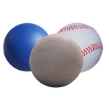
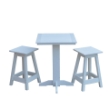





























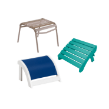





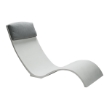







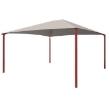
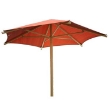
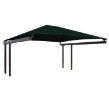

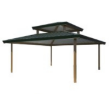
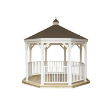
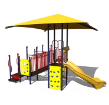











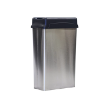
































Leave your comment